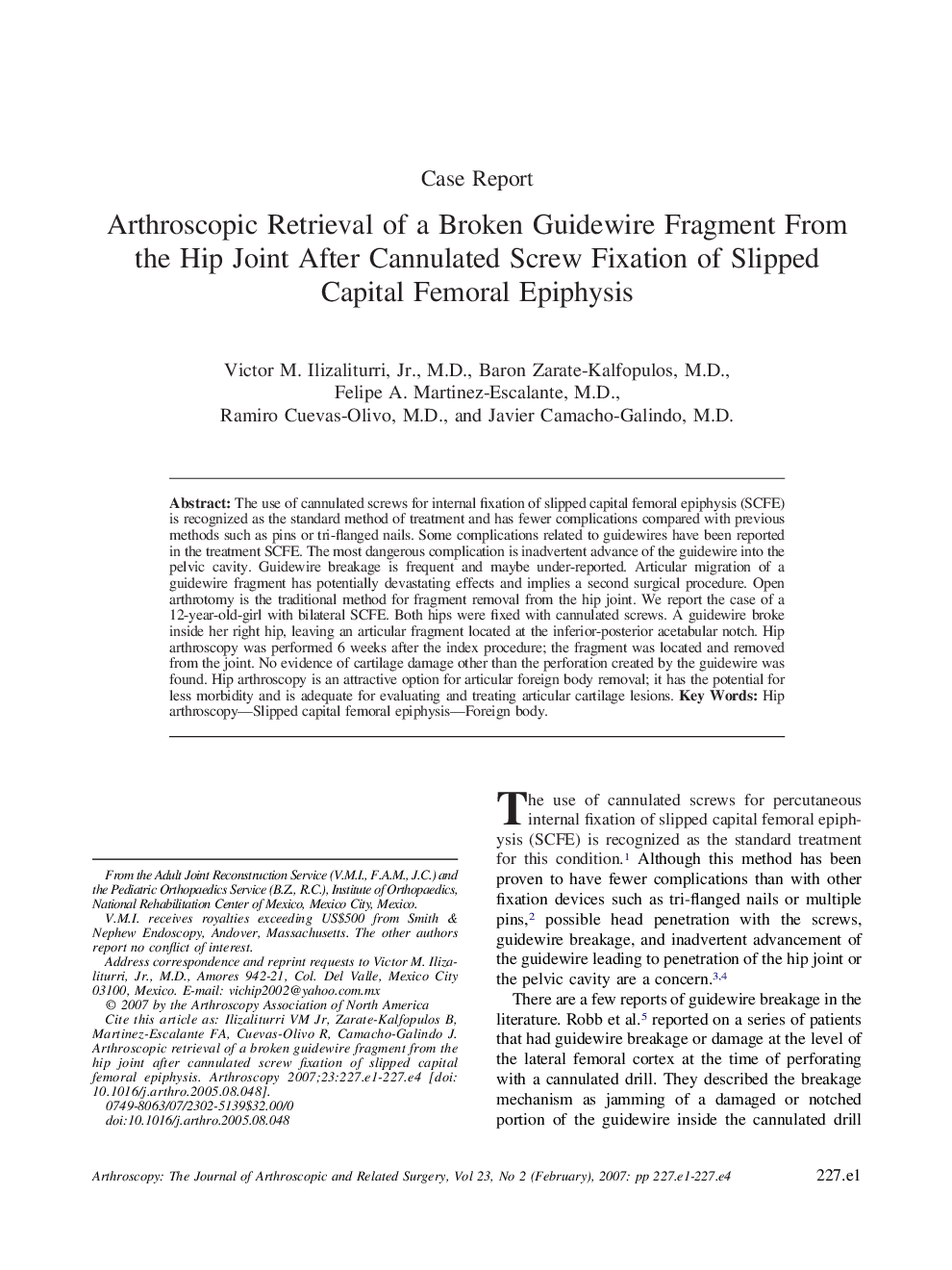| Article ID | Journal | Published Year | Pages | File Type |
|---|---|---|---|---|
| 4047668 | Arthroscopy: The Journal of Arthroscopic & Related Surgery | 2007 | 4 Pages |
Abstract
The use of cannulated screws for internal fixation of slipped capital femoral epiphysis (SCFE) is recognized as the standard method of treatment and has fewer complications compared with previous methods such as pins or tri-flanged nails. Some complications related to guidewires have been reported in the treatment SCFE. The most dangerous complication is inadvertent advance of the guidewire into the pelvic cavity. Guidewire breakage is frequent and maybe under-reported. Articular migration of a guidewire fragment has potentially devastating effects and implies a second surgical procedure. Open arthrotomy is the traditional method for fragment removal from the hip joint. We report the case of a 12-year-old-girl with bilateral SCFE. Both hips were fixed with cannulated screws. A guidewire broke inside her right hip, leaving an articular fragment located at the inferior-posterior acetabular notch. Hip arthroscopy was performed 6 weeks after the index procedure; the fragment was located and removed from the joint. No evidence of cartilage damage other than the perforation created by the guidewire was found. Hip arthroscopy is an attractive option for articular foreign body removal; it has the potential for less morbidity and is adequate for evaluating and treating articular cartilage lesions.
Related Topics
Health Sciences
Medicine and Dentistry
Orthopedics, Sports Medicine and Rehabilitation
Authors
Victor M. M.D., Baron M.D., Felipe A. M.D., Ramiro M.D., Javier M.D.,
